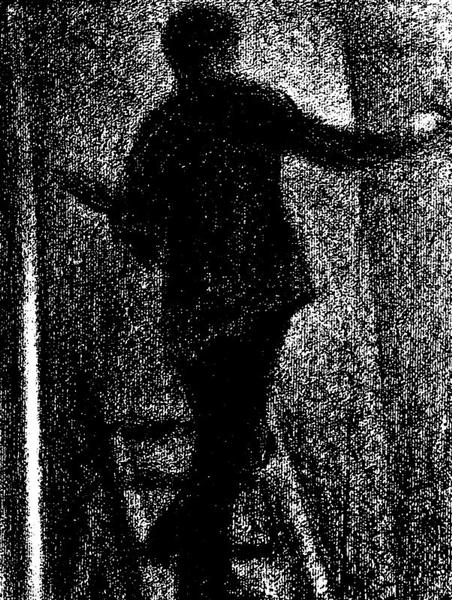Description
Georges Seurat, a pioneer of the postimpressionist movement, is widely recognized for his innovative technique called Puntillismo, which uses small color points to create vibrant and complex images. His work "artist at work" of 1884 is a testimony of his deep dedication to the exploration of light and color, as well as his interest in the artistic process itself. This painting stands out not only for its content, which offers an intimate representation of the artist in its environment, but also for its meticulous composition and its rich color palette.
In "artist at work", Seurat presents a painter sitting in a natural environment, with his canvas and palette in sight. The figure of the artist is central to the composition, suggesting both concentration and deliberation in the act of creating. This approach in the artistic process is manifested in the choice of earthly and green tones, which are intertwined to represent the surrounding landscape. The painter's position, with his absorbed gaze, invites the viewer to reflect on the inner world of the creator, at the same time that he offers a look at the external scene that inspires him.
Seurat's pointillist technique is evident in the structure of the work, where small color points are meticulously assembled to form the scenario. This technique not only challenges the traditional notion of painting application, but also provides a vibrant interaction of light and shadow, creating an almost palpable atmosphere that surrounds the artist and its surroundings. The composition, although simple in its theme, reveals the complexity of artistic work and the meditation that entails; This becomes a comment on art itself, in the sense that creation requires both an adequate environment and the introspection of the artist.
Seurat, being a light student, also plays with color theory, using complementary colors to intensify visual effects through contrast. The choice of a bright background and a more gloomy foreground highlights the figure of the artist, almost taking it out of the canvas and making it palpable for the viewer. This attention to detail and color interaction is a characteristic feature of his work, which can also be observed in his most great compositions, such as "a summer Sunday on the island of La Grande Jatte".
Seurat's approach in everyday life, in this case, the figure of the artist, reveals his interest in realistic representation while doing so in an innovative and stylized way. His work is not only considered a milestone in the history of art, but also poses questions about the role of the artist in society, echoing the transition to a modernity that was increasingly present in the European culture of the late late 19th century.
Through "artist at work", Seurat not only captures a specific moment in the life of an artist, but also establishes a dialogue between creation and the spectator, inviting him to participate in the contemplation of the act of making art. This canvas, although less known than some of his masterpieces, is a clear example of the legacy that Seurat left on the interaction of color and light in art, consolidating his position as one of the most important innovatives of his time.
KUADROS ©, a famous paint on your wall.
Hand-made oil painting reproductions, with the quality of professional artists and the distinctive seal of KUADROS ©.
Reproduction service paintings With a guarantee of satisfaction. If you are not completely satisfied with the replica of your painting, we refund your money 100%.

